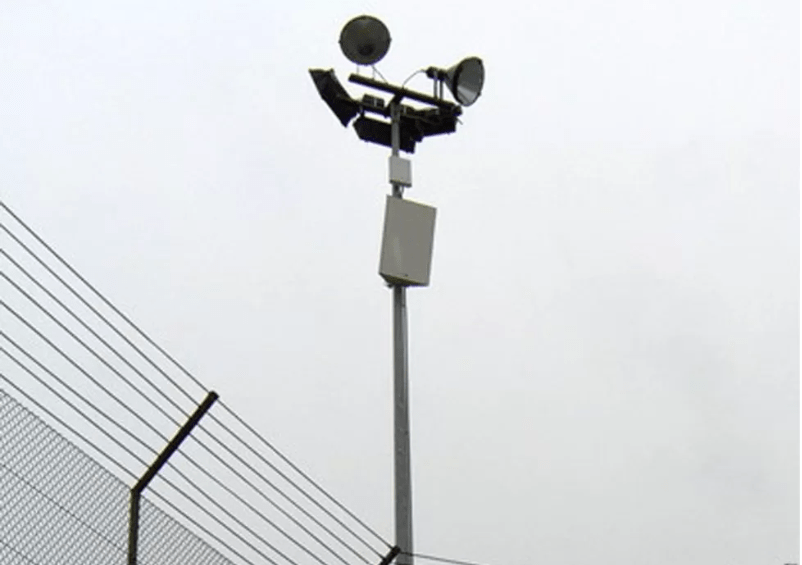
UK prisons are struggling to combat the influx of illegal mobile phones within their walls. Despite the annual seizure of thousands of these devices, inmates are still able to smuggle them in undetected or have them thrown over the prison walls. These phones are highly sought after and can cost between £400 and £1,000 each to borrow.
Given the potential danger that these phones can pose to both inmates and staff, it is surprising that technology is not being utilized to prevent their entry into the facility. The National Offender Management Service (NOMS) confiscated over 7,000 mobile phones and Sim cards in UK prisons in 2013, but this is not enough to eradicate the problem.
Prison officials need to assess the effectiveness of their existing security measures and explore the implementation of new technologies to combat this issue. It’s vital to ensure the safety of inmates, staff members, and the public, and to prevent prisoners from continuing their criminal activities while serving their time.”
According to the National Offender Management Service (NOMS), inmates in UK prisons have been found to use smuggled mobile phones to conduct illegal activities like commissioning murders, planning escapes, importing firearms, and arranging drug deals. The problem of these activities being conducted from inside prison walls is widespread.
One particularly alarming case involved a prisoner who managed to smuggle machine-guns into the country from his cell by organizing the crime by phone. Judge David Farrell QC criticised the “wholly inadequate” prison security that allowed such a crime to take place, calling it a “scandal”.
In addition to weapon smuggling, inmates have also been caught running a cocaine ring, arranging the murder of a teenager as part of a feud and even organising the killing of a gang leader – all from their prison cells. These incidents highlight the serious issue of prison security and the need for more effective measures to prevent illegal activities being carried out by inmates.

According to a mother of a prisoner at HMP Northumberland, the prison is full of mobile phones. She claims that some people throw them over the fences, while prisoners who have access to the prison grounds bring them in. This situation is not unique, according to Glyn Travis from the Prison Officers’ Association. He explains that drugs and mobile phones are freely thrown into prisons, and delivery by drone is further undermining external security measures aimed at protecting the public. The high prevalence of mobile phones amongst prisoners can pose a significant risk, as it may facilitate illegal activities and communication with the outside world. Prisons must find a way to address this security issue in a manner that safeguards public safety and the welfare of both staff and inmates.
According to Sodexo, the operator of HMP Northumberland, security staff has been working diligently to prevent illicit items from entering the prison. However, the amount of mobile phones that still manage to make their way into prisons is quite significant, making it difficult to detect and confiscate them.
The POA suggests that the most plausible solution would be to render these phones useless. Mobile phone jammers or grabbers, which are technology devices that block or divert signals from reaching their intended destination, are readily available. Implementing such devices could prove to be an effective solution to this ongoing problem.
Strategies for Reducing Communication Channels: Four Effective Methods
In order to combat the illicit use of mobile phones within prisons, there are various approaches that can be taken. These include jamming/blocking, grabbing, operator disconnection, and stop and search.
Jamming/blocking is a method whereby a signal is transmitted to prevent handsets from receiving their base station signal. This is a cost-effective and mostly effective approach, but it can also block legitimate calls and may interfere with signals outside the prison if not done carefully. This method can also affect the phones of prison staff within the jammer’s reach.
Grabbing, on the other hand, uses a fake network to attract phones, with a selective “white list” for staff or nearby residents. This approach can be more expensive than blanket jamming, but it also allows for the identification and monitoring of illicit phones, rather than blocking them entirely.
Operator disconnection was introduced under the 2015 Serious Crime Act, but the necessary regulations have not yet been enacted. Although this approach could work by forcibly disconnecting illicit phones, it may be difficult to enforce if disconnected phones and SIM cards can simply be replaced.
Finally, stop and search methods involve physically searching visitors, staff, cells, and inmates for illicit phones. This can include the use of sniffer dogs trained to detect mobile phones. While this method can be effective, it is time-consuming and some phones may still escape detection, with new ones brought in to replace those confiscated.
Overall, a combination of these approaches may provide the most effective strategy for dealing with the problem of illicit mobile phones in prisons.”
But NOMS says the expense is “disproportionate”, at up to £300m to fit and £800,000 a year to maintain.
However, technology installers, such as US company Cell Antenna’s Howard Melamed, have been downplaying the cost of the technology for years.
Steve Rogers, the managing director of electronic counter measures company Digital RF, says the UK’s wide variety of prisons – large, small, new-build, Victorian, open, high security – makes pricing “very difficult”.
“How do you value this, that’s the question, isn’t it?” Mr Rogers says.
“When you work out that value then you can say whether it’s affordable or not.”
The 2010 Crime and Security Act made possessing a mobile phone in jail punishable by up to two years’ imprisonment and/or an unlimited fine.
But inmates do not worry about punishment for crimes committed inside, Mr Travis says.
“I don’t know why they should fear the fact that, if they get prosecuted – and I use the word if they get prosecuted – by the CPS and the police, and then they go to the courts and they may get a 12-month concurrent sentence.”
Prisoners in HMP Northumberland know they are not allowed mobiles, but “lots of them” have them nonetheless, the inmate’s mother says.

Last year the government awarded a £60,000 contract to explore the use of mobile phones in prisons – how to stop them getting in, find those that do and disrupt those which cannot be located.
The previous year the Scottish Prison Service announced plans to pilot blocking technology at HMPs Shotts and Glenochil.
But NOMS specifically excluded such “prohibitively expensive solutions”, despite a change in the law in 2012 permitting their use in prisons.
Then, in 2015, the Serious Crime Act introduced the possibility of regulations giving the government – and ministers in Scotland – the power to force mobile phone operators to disconnect illicit phones and Sim cards.
Notably, the authorities would not need to find the phone to have it cut off.
The regulations are still to be enacted. A Prison Service spokesman said they would be “introduced in due course”.
But disconnected Sim cards and phones are soon replaced, Mr Rogers says.
And cutting people off is not in the commercial interests of organisations that make money “making sure people stay on air”.
“They only have to get one or two people wrong and they could be in a quite interesting legal situation,” he says.
The POA has been lobbying for signal blockers for years, raising it with MPs and each successive government.
“Every year they say ‘we can’t afford it, we’ll do a pilot scheme, we’ll do this’ and, whenever they try to do it, they say it causes too many problems – absolute rubbish,” Mr Travis says.

Mr. Rogers is an advocate for using the technology of cell phone grabbing in prisons. By doing so, prisons can easily keep track of how many handsets have been disabled and to whom they belong. However, blocking signals can sometimes leave small spots where a signal can still break through, making it difficult to measure the impact of the blocking method.
The success of the cell phone grabbing technology can only be determined by the number of phones thrown away by inmates who do not want to risk punishment for possessing an illicit item that no longer works.
The Prison Service acknowledges that prisons require urgent reform and that new ways of finding and blocking mobile phones must be explored. Equipping prison officers with the necessary tools to handle this task is also a priority.

It lists detection equipment, routine searches, CCTV, sniffer dogs and penalties – but is very reticent about its position on blocking technology.
A spokesman refused to say whether the 2012 legislation permitting the use of “signal-denying” technology had ever been used.
He also refused to comment on which publicised pilot schemes had taken place or what conclusions on cost and effectiveness they had come to.
The POA believes blocking or grabbing would not only control prisoners, it would “have significant impact on the general public”.
When the “people who’ve committed some of the most heinous crimes” can organise more crime from inside a prison, “how safe are your children?”, Mr Travis asks.